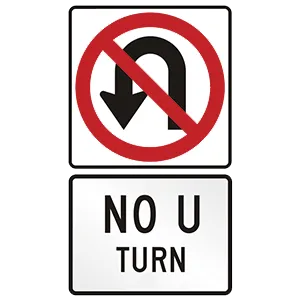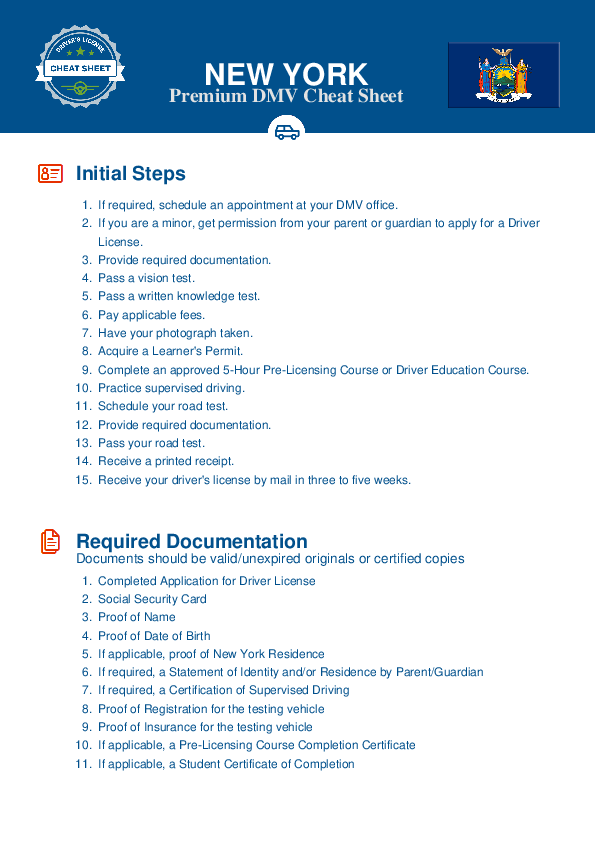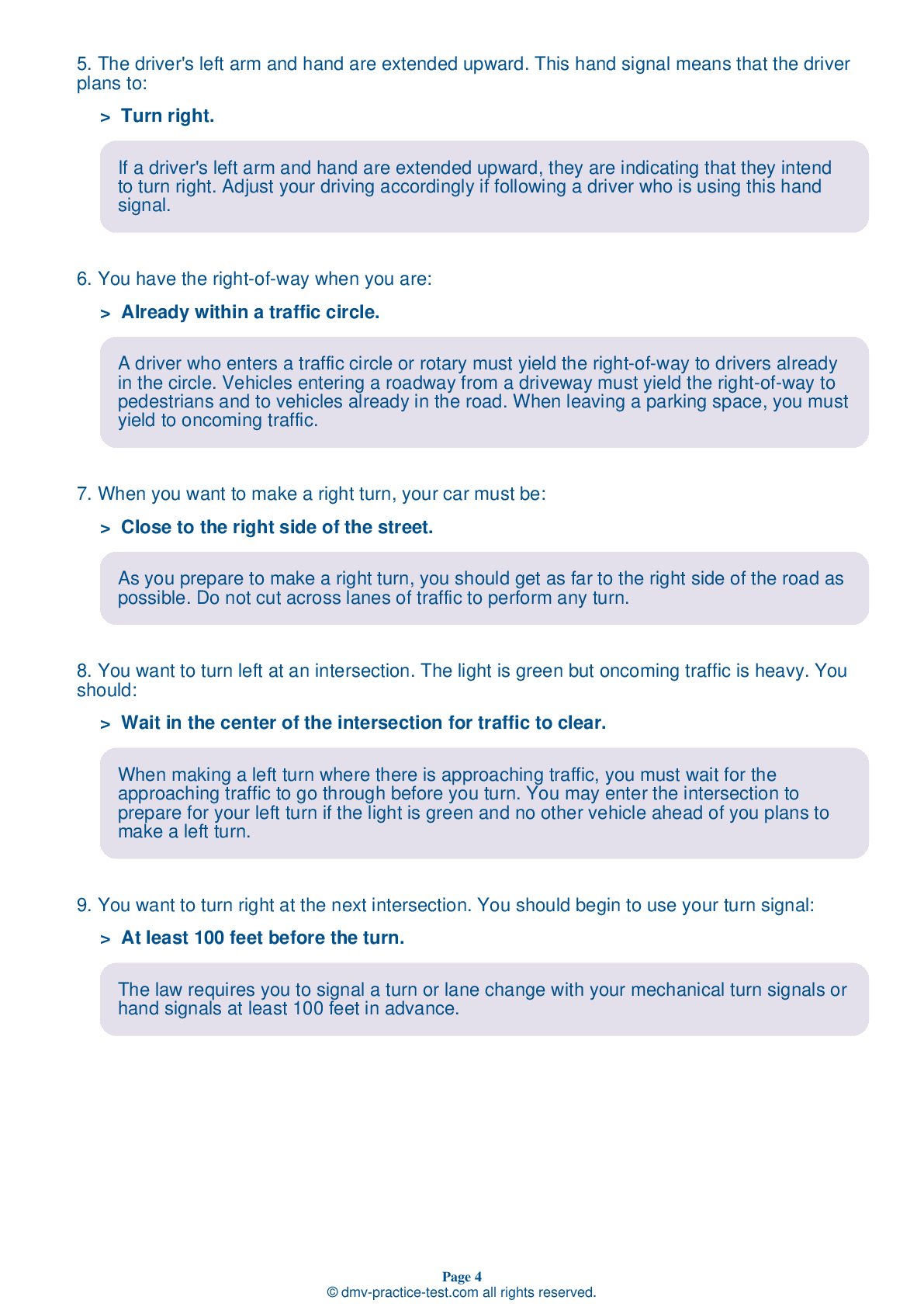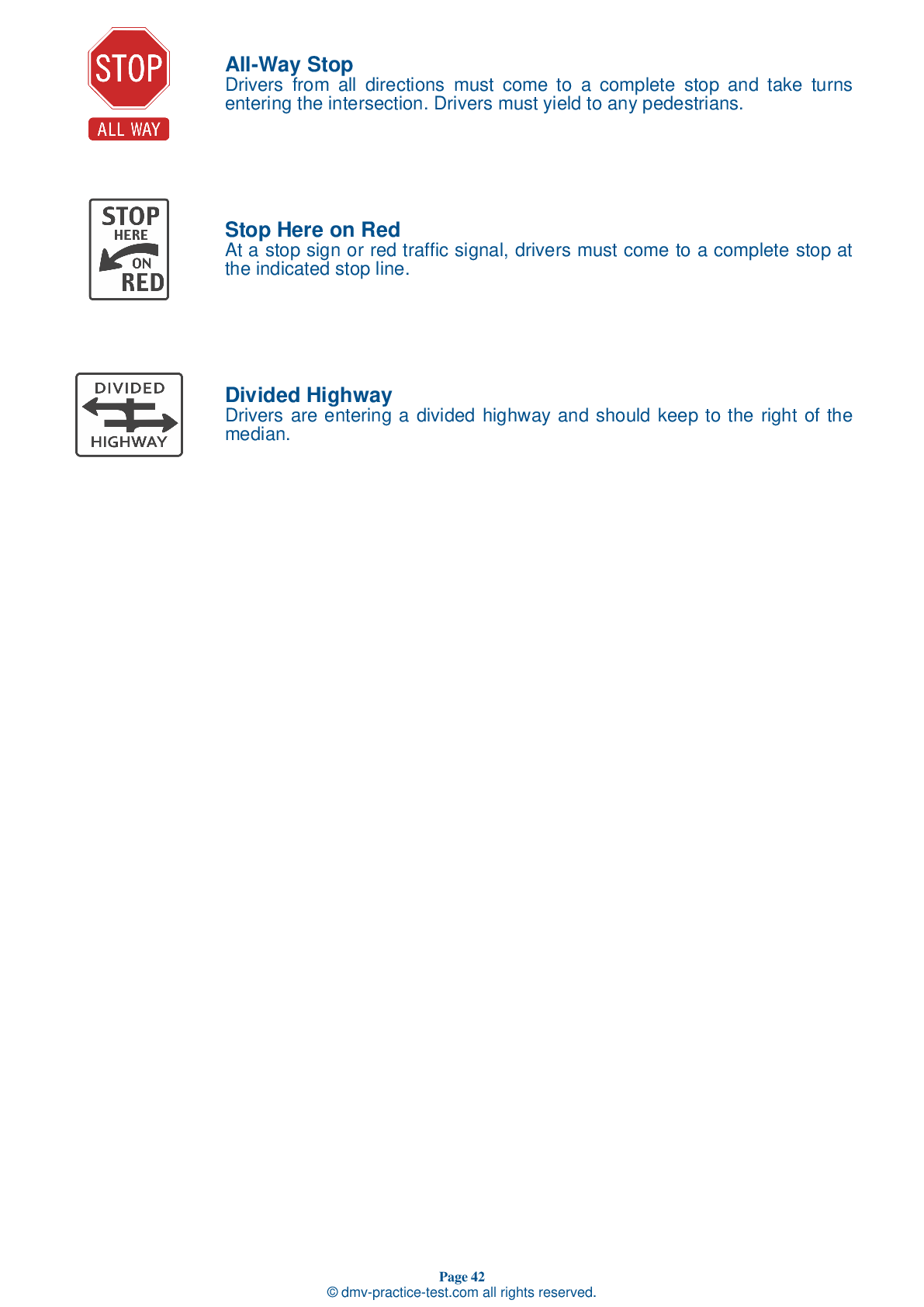FREE New York DMV Practice Test #4 Page 3 of 3
New York's DMV practise examinations have been revised for January 2025. It includes questions based on the New York Driver Handbook's most significant traffic signals and legislation for 2025. Use actual questions that are very similar (often identical!) to the DMV driving permit test and driver's licence exam to study for the DMV driving permit test and driver's licence exam.
On the practise exam, each question gets a tip and explanation to help you remember the concepts. The written component of the official New York DMV test will feature questions about traffic rules, traffic signs, and driving statutes, as well as knowledge from the Driver Handbook.
To obtain a passing grade, you must correctly answer 14 of the 20 questions. Take this practise test from the New York Department of Motor Vehicles to help you prepare for your instruction permit or driver's licence.
The DMV exam is available in several languages.
Using any kind of testing assistance will result in an automatic fail, and the DMV may take additional action against your driver's licence, so stay away from it.
15 . Before switching on the ignition, you should:
Develop a routine for entering and leaving your car. Before switching on the ignition, buckle your safety belt and see that all passengers do likewise.
16 . When exiting an expressway, you should:
When exiting an expressway, it is important to be alert to other traffic moving nearby. Be sure to look at the new posted speed limit and check your speedometer. It is unlikely that you will be exiting onto a road with a speed limit as high as the one found on the expressway.
17 . When two vehicles enter an intersection from different highways at the same time, which vehicle must yield the right-of-way?
At intersections that are controlled by signs or signals and at intersections that are uncontrolled, the driver on the left must yield the right-of-way to the driver on the right when two vehicles arrive to the intersection at the same time.
18 . This sign means:

This sign indicates that you may not make a U-turn. You cannot turn around to go in the opposite direction at an intersection where this sign is posted.
19 . You may pass another vehicle on the right if it is waiting to:
While you generally may pass only on the left, there are certain conditions under which passing on the right is permitted. You should only pass on the right if you can do so safely and you do not need to drive on or across the shoulder or edge line of the road. One situation where passing on the right is allowed is when the vehicle in front of you is making a left turn.
20 . When merging onto a freeway, it is usually best to:
When entering a freeway, use the on-ramp to accelerate to the speed of freeway traffic so you can blend in smoothly and safely. Entering traffic must yield to traffic already on the freeway.
Need Car Insurance? No problem!
Compare the best rates in New York and find a personalized policy that meets your needs.
1. Are You Currently insured ?
2. Married ?
3. Do you own your Home?
4. Do you have more than 1 car ?
5. Have you or a Family Member Honorably Served in U.S. Military ?
6. Your Name
7. Age
8. Zip code
IMPORTANT REMINDER:Auto Insurance is Mandatory to drive in New York. Get covered before you hit the road to avoid any fines.
Ranked by best match



